
在ポーランド日本国大使館

November 28th, 2013
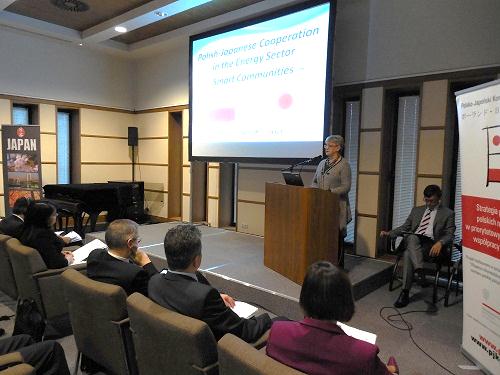
In her opening speech Dr. Henryka Bochniarz, President of PKPP Lewiatan stressed the importance of the seminar’s subject for the development of modern communities. Despite only a partial success of the COP19 conference, the emission reduction and energy efficiency issue remains essential. The experiences of Japanese companies in their transformation towards the low-emission and sustainable development can be a good example for Poland. As today’s event is attended by so many representatives of Japanese companies and the interest in sharing the knowledge and experience is so great, we can expect that the smart solutions developed by Japanese firms will be successfully implemented also in Poland. The conclusions from the seminar should be passed on to the new Minister of the Environment. Dr. Bochniarz expressed her hope that the open dialog between Japan and Poland can contribute to the achievement of good results of the Polish economy and be a step forward in obtaining the effects globally.
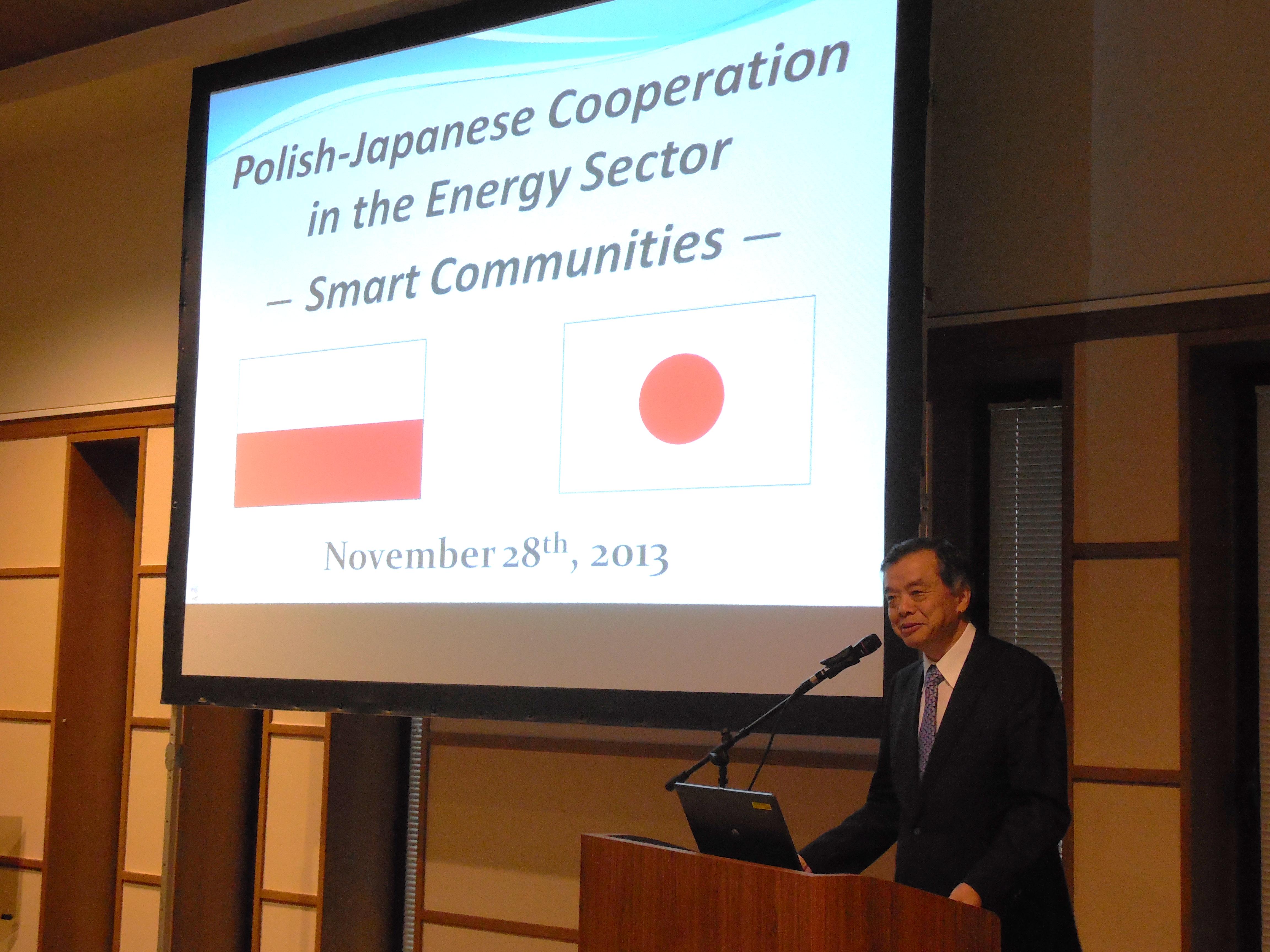
Mr. Makoto Yamanaka, Ambassador of Japan welcomed the participants of the seminar hosted by the Embassy. He pointed to the recent developments in the Japanese-Polish economic cooperation and stressed the role of the Prime Minister Shinzo Abe’s visit to Poland, the Deputy Prime Minister Janusz Piechociński’s visit to Japan and his meeting with Minister of Economy, Trade and Industry, Mr. Motegi. As on that occasion the Japanese and Polish sides declared that their cooperation in the energy sector should be enhanced, the energy issue became the one of top priority. An important area to work together on is the smart community. During the seminar experts, scientists and business representatives have a chance to present the solutions for Poland to secure advanced technologies, sustainable infrastructure and energy security.
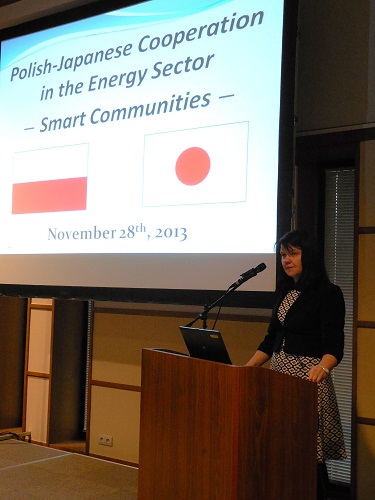
Ms. Katarzyna Kacperczyk, Undersecretary of State at the Ministry of Foreign Affairs focused on the „Support for the civic and self-governmental dimension of the Polish foreign policy” project which provided financing to the seminar. The support offered to regions and their residents is becoming more and more important. It promotes local initiatives and stimulates the cooperation with foreign investors. The project has been carried out since 2012 (PLN 4.5 million spent on 42 projects that year). PLN 3 million has been allocated for it for 2014. Minister Kascperczyk encouraged self-governments and local communities to take interest in the project, esp. in the context of the energy sector. She pointed to institutional cooperation in this area – signing the Memorandum of Understanding between GIG and JCOAL, purchasing from Poland CO2 allowances by Japan. She was pleased with the fact that there were numerous Japanese investors in the energy sector and that business activities in that field proved effective. The event organized may be an inspiration to further increase the cooperation.
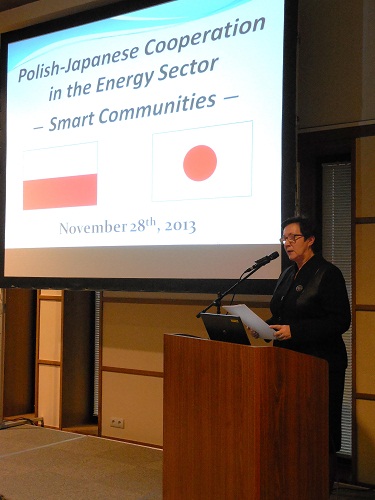
Ms. Anna Milczanowska, Mayor of Radomsko, was pleased with the fact that representatives of the Radomsko region occupy high positions in Poland’s public administration (vice-minister Katarzyna Kacperczyk; Ambassador to Japan Cyryl Kozaczewski). The seminar co-organizer, the City of Radomsko, has nearly 50 000 residents and great sentiment to Japan. Well known is the “Dojo – Stara Wieś” Center for Japanese Sports and Martial Arts. A few years ago Nichirei Logistics Company joined the Radomsko Special Economic Sub-zone, offering jobs to 200 local residents. The Radomsko self-government wants to further develop the economic cooperation with Japan. The co-organization of the seminar is a way of taking part in the global debate concerning the energy sector and renewable energy sources, as well as looking for smart solutions for the local community.
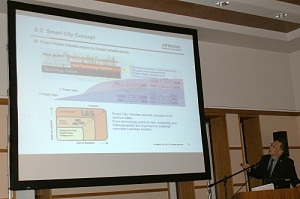
In his opening, Mr Emura presented Hitachi Group world-wide and described the structure of the company’s core businesses. He underlined strongly that in the center of the Group’s interest lies the global development of its Social Innovation Business. Smart city is an example of this. Through the creation of smart cities new business opportunities come true, mostly due to the necessity of cooperation of specialists of various fields. Synergy delivers the optimum smart infrastructure. Mr Emura’s presentation depicted Hitachi’s major activities, among them real business projects in Okinawa, Y-port and Kashiwa-city. In particular, Malaga (Spain) and US (Hawaii) smart community and grid demonstration projects were introduced. Malaga project was portrayed as a step to zero emission mobility undertaking consisting of two phases: establishment of electric vehicle (EV) charging infrastructure and trial of power demand & supply managements (Mainly Community Energy Management). In the JUMPSmartMaui Project the state of Hawaii has set a goal to generate 40 percent of its electricity from renewable energy resources by 2030. Mr Emura stressed that collaboration is the most important factor for successful implementation of a project (expressed his thanks to NEDO and among Japanese companies mentioned Nissan and Mizuho).
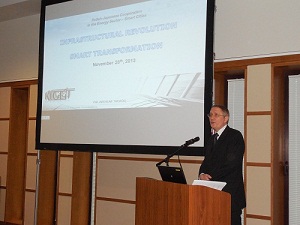
The representative of KIGEiT stated that nowadays the world is witnesing the 3rd revolution – namely, infrastructural revolution. In his presentation Dr Tworóg reassured that the Polish energy sector is ready for innovative investments, that the industry intends to harmonize and integrate investments in infrastructure. He underlined the role of ICT (information and communications technology) sector in Poland and the potential of Polish ICT industry in Europe. Speaking of business opportunities for investors, Dr Tworóg stressed that Poland has direct access to the EU smart grids market and that fairly fast development of LED technology in the country allows for efficient improvement of new energy technologies. However, he acknowledged that the Polish ICT industry lacks the increasingly important storage technology, in development of which companies like Hitachi Group could become very valuable partners. On behalf of KIGEiT, Dr Tworóg has expressed full support for EPA (Economic Partnership Arrangement) arrangements with Japan.
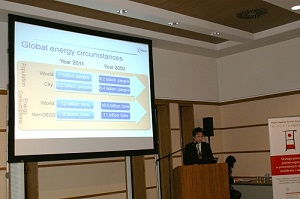
Mr Arai’s presentation consisted of three parts: the first part concerned global energy circumstances, the second described the idea of a smart community and the last one touched on NEDO’s demonstration projects. NEDO’s representative claimed that, as a result of growing population and surge in urban dwellers, there are serious concerns about the environment and energy utilization and stressed the necessity of developing efficient energy utilization to support healthy economic growth. With reference to the Japanese energy policy, he pointed to the fact that oil dependence has been leveled off since the 1970’s, however, after 2011 great earthquake, in 2013 all nuclear power plants in Japan have been shut down and the ratio of oil dependency increased again. According to Mr Arai’s presentation, the total output of renewable energy in 2010 was 110b kwh, which is going to be expanded to about 300b kwh in 2030. Finally, NEDO presented its Smart Community projects with their number amounting to 500. Among them there are: Sendai Micro Grid, Malaga Spain Project, Lyon France etc.
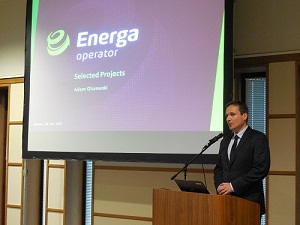
Speaking of his company, Dr Olszewski explained that currently half of the electricity generation from renewable sources in Poland takes place in the area of Energa Group. He further described Energa’s most recent AMI (Advance Metering Infrastructure) project which is heading towards full implementation. One of the AMI program’s objectives is metering data collection, an area of wide business opportunities. Dr Olszewski emphasized that implementation of AMI system constitutes the first step to Smart Grid deployment in Energa Operator. He also presented the so-called consumption profiles published on the company’s website, which enables consumers to acquire the best retail. In closing his speech, Dr Olszewski revealed some details on Energa’s Smart Grid Pilot project in Hel Pennisula.
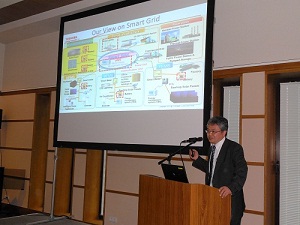
Toshiba’s representative delivered the company’s overview on smart grids which he placed in the center of the whole energy system architecture. The key product in this structure is μEMS (Micro Energy Management System) used for monitoring and controlling the grids. The Toshiba’s system adjusts supply and demand in cooperation with electric power suppliers, which leads to effective energy consumption. Moreover, Mr Asano described the company’s battery storage system in this architecture. Finally, he touched on intelligent public lightening solutions and revealed Toshiba’s experience in smart grid projects (New Mexico, Indiana, Genova etc.).
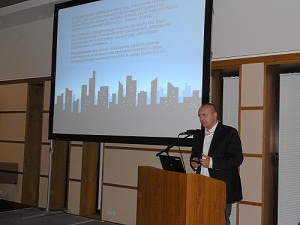
Mr Kosieliński’s presentation was focused on the problem of smart community as a place where huge amounts of information are being processed and where the ability of making use of this information is of the utmost importance. He showed a number of examples of intelligent Polish cities that managed to establish new life patterns, thanks to successful information interpretation (Warsaw, Cracow, Gdańsk, Wrocław etc.).
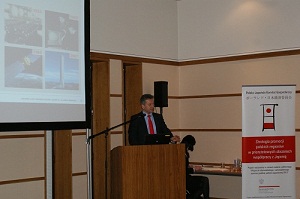
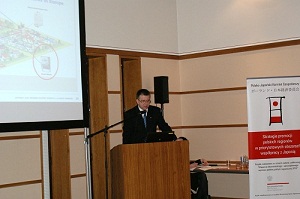
Mistubishi presented the company’s innovative solutions applicable in the living environment system such as heat pumps, air conditioning, ventilation etc. Mr Gęśla introduced building certification programs which perfectly fit in the global trend towards the creation of environment friendly buildings and facilities and described several case studies: Canada, UK, Germany. When approaching the subjects of Mitsubishi’s industrial automation, Mr Zadykowicz characterized the system composition of smart grid in Japan, the company’s smart grid experimental facilities and gave an example of smart house in Ofuna city, which is fully equipped with smart management of energy and can withstand up to five days without power supply.
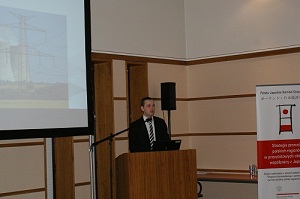
Mr Kisiel reported that the total installed capacity of the Polish energy system corresponds to 38GW and that gross electricity generation in 2012 reached a level of 162 TWh. He clarified that the Polish energy sector is strongly dependent on coal. In 2012 around 84.1% of electricity was generated from both hard coal and lignite. According to the newest projections, in 2030 coal will still be the major pillar of the energy security of Poland. Nevertheless, the Ministry of Economy projects constant growth in energy production from renewable sources and hopes that Poland will be able to operate its own nuclear power plant around 2023. Mr Kisiel mentioned that the Polish main goal is to reduce emissions from the power sector without jeopardizing the country’s energy security and stated that without any doubts there is a need to invest in development of new capacities, including those based on coal.
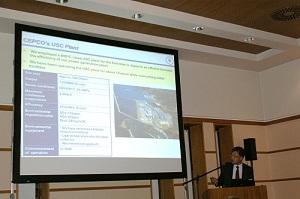
Speaking of the Chugoku Electric Power company profile, Mr Yata explained that it operates 12 thermal and 97 hydroelectric power stations and the installed capacity amounts to about 12GW. He stressed that the company executed cooperation agreement with PGE and Tauron in 2010 and began to conduct feasibility studies for a coal-fired thermal power station and investigations of smart grid in 2010 with support of METI and NEDO. Mr Yata shared the fact that the JI project at KW Szczygłowice contributed to the reduction of CO2 emissions by 200k tones and to safe operation of the coal mine through the modernization of vacuum pump station. The representative delivered many details on the company’s cooperation projects with the Polish energy groups.
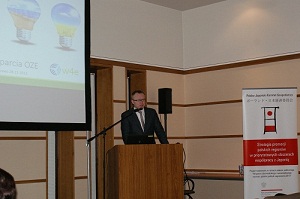
Before describing new auctioning system, Mr Rudyszyn outlined current situation in the Polish energy market, in particular the most recent problem of green certificates. He detailed the framework of the Polish support system and pointed out the obligations of Poland concerning the renewable energy sources. Mr Rudyszyn presented governmental draft law on RES, revealed the character of the transition period and concluded with explanation of the new system based on auctions.
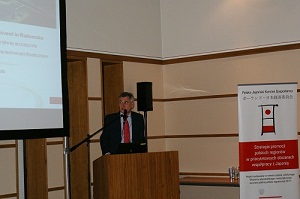
Mr Wojdełko presented the Radomsko region as a profitable prospective destination for investments. He underlined the advantages of the district such as location and transportation, special economic zone, young and well-qualified professionals or, last but not least, natural environment. Mr Wojdełko touched upon Japanese accents in Radomsko, among which the most impressive is the “Dojo – Stara Wieś”.
